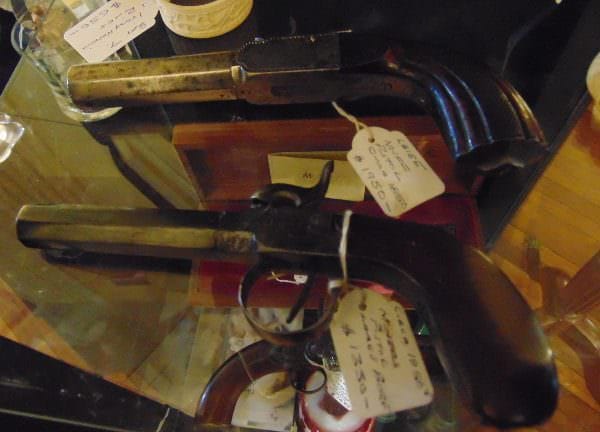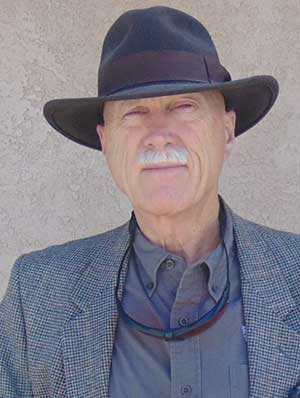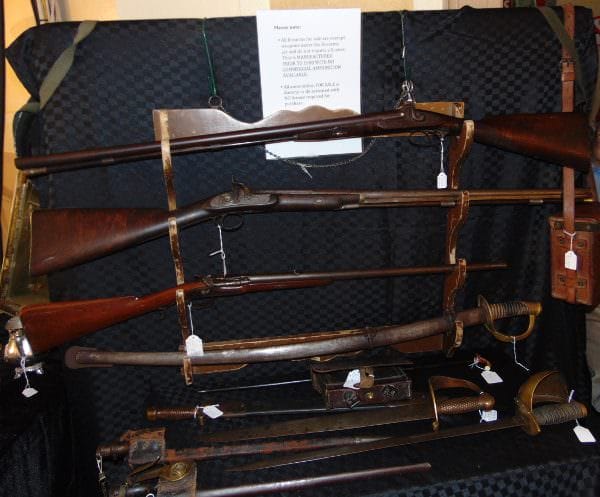By Dean Weingarten


Arizona -(Ammoland.com)- At an antique show in New South Wales, these 1850 era pocket pistols were for sale. The concept of small concealable pistols started as early as the 1700’s.
From the Eighteenth Century on there were huge numbers of small, concealable pistols manufactured in England and on the Continent. The smaller ones were described as “Muff Pistols” because they were often concealed in a lady’s muff, although they could also be slipped inside a Gentleman’s pocket (and Gentlemen used muffs too).
The pocket pistol came into vogue about the same time as Australia was being colonized by England. The earliest muff pistols were flintlocks. Later ones used percussion caps. It is not surprising that numbers of small, concealable muzzleloading pocket pistols would show up in Australian antique shows. Australian law defines guns made before 1900 as antique “non-guns” *if* they do not use fixed ammunition or *if* ammunition for them is not available commercially.
These percussion muff and “miner” pocket pistols fit that definition. Note the prices are fairly high by American standards. The muff pistol, by a known maker is listed at $1950 Australian, while the “miner” pistol is listed at $1350. Take off 20% to convert to U.S. dollars.
Reproductions made after 1900 are considered to be real guns, and are regulated just like modern cartridge pistols. I have been told that a firearms license is required to purchase black powder or percussion caps.
Long guns have the same treatment.

The long guns shown are a percussion double barreled fowling piece, top, a Percussion musket, middle, and a Snyder conversion, to a .50 caliber rook rifle below it. Swords require a license in Victoria. In most Australian states they can be purchased without a special permit.
I am sure no commercial ammunition is made for the Snyder/Rook rifle conversion. It appeared to be a well made rifle, but I was not willing to pay $1,500 for it.
An antique seller told me that there used to be three or more tables devoted to antique guns at this show. Now there is only one. Fear of violating one of the firearm laws rules was listed as a factor.
Australian are interested in muzzleloading firearms for sport and hunting. They are required to obtain a firearms license to fire those guns. The Sport Shooting Association of Australia has a muzzleloader group. All legal firearms commerce is required to go through firearms shops that are strictly regulated.
There is uncertainty about whether actual antiques, such as the above, must be stored in locked metal safes. Some police have not made much of a distinction when making firearms arrests.
Donald Eykamp had several original Colt percussion revolvers confiscated as part of his collection on “unsafe storage” charges. Fines have been paid, but the disposition of the firearms are being decided at the appeals court level. The police insist on destroying the collection, valued at $150,000. The original court ruled the firearms could be sold, and the proceeds returned to the owner. The police appealed the ruling.
A ruling on the appeal has been expected for over a month.
©2017 by Dean Weingarten: Permission to share is granted when this notice is included.
About Dean Weingarten:
Dean Weingarten has been a peace officer, a military officer, was on the University of Wisconsin Pistol Team for four years, and was first certified to teach firearms safety in 1973. He taught the Arizona concealed carry course for fifteen years until the goal of constitutional carry was attained. He has degrees in meteorology and mining engineering, and recently retired from the Department of Defense after a 30 year career in Army Research, Development, Testing, and Evaluation.
